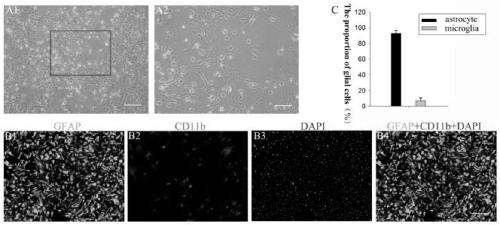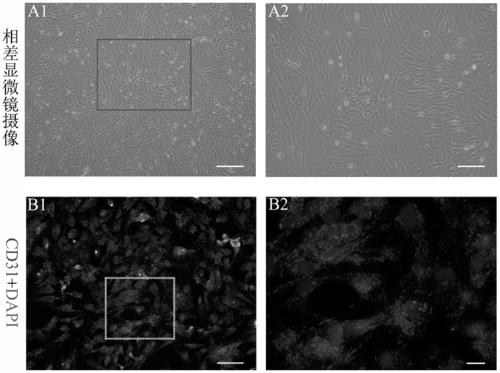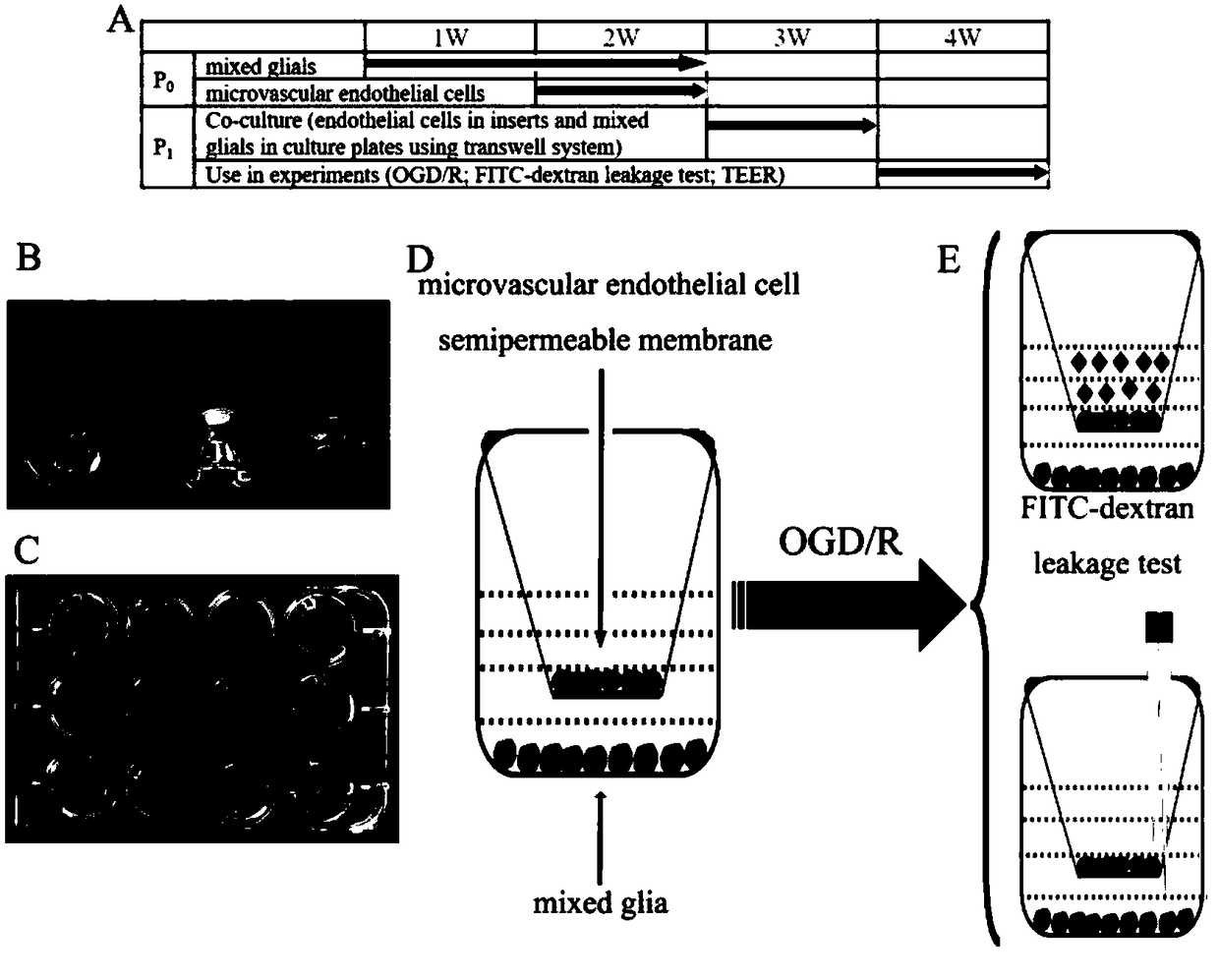Blood-spinal cord barrier OGD/R injury model and construction method and application thereof
A technology of blood spinal cord barrier and injury model, which is applied in the field of biomedicine, can solve the problems of missing molecular markers, defects, and cannot fully simulate the physical morphological structure and function of the blood spinal cord barrier, and achieves easy operation, good repeatability, and excellent barrier. effect of function
- Summary
- Abstract
- Description
- Claims
- Application Information
AI Technical Summary
Problems solved by technology
Method used
Image
Examples
Embodiment 1
[0052] Example 1 In vitro blood-spinal cord barrier model and establishment of blood-spinal cord barrier oxygen-glucose deprivation / reoxygenation (oxygen glucosedeprivation / re-oxygenation, OGD / R) injury model
[0053] 1. Primary culture and identification of mixed glial cells derived from rat spinal cord
[0054] 1.1 Primary culture of mixed glial cells
[0055] (1) Disinfect instruments for 30 minutes;
[0056] (2) Take a newborn SD rat within 1 day, and immerse the whole body in 75% alcohol for disinfection for 2 minutes;
[0057] (3) Quickly take out the spinal cord by aseptic method in the aseptic operating table (fix the limbs of the rat with pins, pull the skin of the neck with tweezers, cut off the spine from the cervical cord with scissors, find the spinal canal, hook the tweezers into the spinal canal, pull back and upward to remove the spinal canal to the tail, expose the cervical cord, thoracic cord, and lumbar cord, take out the spinal cord with tweezers, and pla...
Embodiment 2
[0083] Example 2 Blood-spinal cord barrier OGD / R injury model detection application of its permeability, tight junction-related proteins, and inflammatory factors
[0084] In this example, a transmembrane resistance meter was used to measure the transendothelial intercellular resistance of the blood-spinal cord barrier OGD / R injury model constructed in Example 1 at different time points after the blood-spinal cord barrier oxygen-glucose deprivation / reoxygenation injury, and by detecting different time points The leakage rate of dextran (FITC-dextran, F-D) labeled with isothiocyanate fluorescent agent was used to evaluate the permeability of endothelial cells, and to determine the successful modeling of the BSCB oxygen-glucose deprivation / reoxygenation injury model; Differences in the secretion of leukocyte chemokines (MIP-1α, MIP-1β), leukocyte adhesion factors (ICAM-1, VCAM-1), pro-inflammatory factors (IL-1β, TNF-α, iNOS, COX-2) ; Immunofluorescence and Western Blot techniqu...
Embodiment 3
[0090] Example 3 In Vitro Drug Screening
[0091] 1. The effect of EGFR inhibitor PD168393 (a potential neuroprotective agent) on the permeability of the blood-spinal cord barrier OGD / R injury model
[0092] 1.1. Preparation of PD168393 (Abcam, ab145187, USA) working solution: add 135 μl DMSO to 1 mg PD168393 powder, add 405 μl HBSS solution after fully dissolving, and mix well to make 540 μl 5mM PD168393 stock solution, after aliquoting -20°C save.
[0093] 1.2 Experimental grouping: Divide the BSCB model in vitro into 5 groups: OGD / R injury group, add 3 different concentrations (10nM, 1nM and 0.1nM) of PD168393 intervention treatment to 3 treatment groups when OGD / R model reoxygenation, no The BSCB model treated with any treatment was used as the normal control group.
[0094] 1.3 Fluorescent dye leakage test: add 200 μl FITC-dextran (dextran labeled with isothiocyanate fluorescent agent) to the upper chamber after reoxygenation for 3 hours, 6 hours, 12 hours and 24 hours ...
PUM
 Login to View More
Login to View More Abstract
Description
Claims
Application Information
 Login to View More
Login to View More - R&D
- Intellectual Property
- Life Sciences
- Materials
- Tech Scout
- Unparalleled Data Quality
- Higher Quality Content
- 60% Fewer Hallucinations
Browse by: Latest US Patents, China's latest patents, Technical Efficacy Thesaurus, Application Domain, Technology Topic, Popular Technical Reports.
© 2025 PatSnap. All rights reserved.Legal|Privacy policy|Modern Slavery Act Transparency Statement|Sitemap|About US| Contact US: help@patsnap.com



